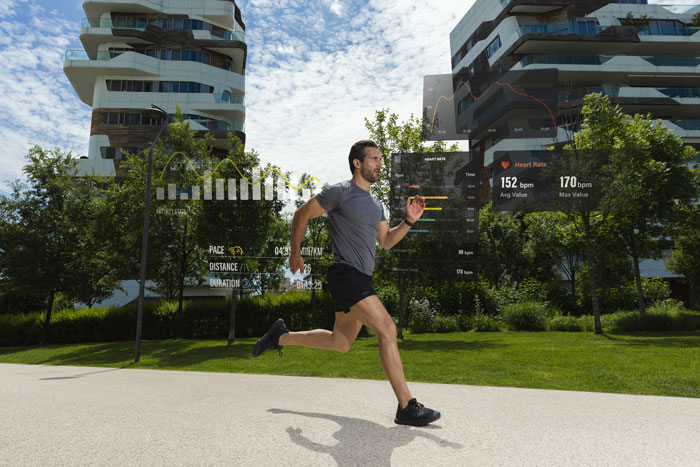When it comes to fitness boutiques and health clubs, some of the most dominant trends of the year increasingly incorporate technology or aim to reach special populations, while trends of the past several years, like the demand for functional training, high-intensity training and yoga, continue to heavily influence decision-makers and facility directors who deliver fitness programming to the public.
This is all according to the American College of Sports Medicine’s (ACSM’s) annual survey of clinicians, researchers and practitioners in the fitness industry, published in the article, “2024 ACSM Worldwide Fitness Trends: Future Directions of the Health and Fitness Industry” in ACSM’s Health & Fitness Journal (January/February). The survey predicts the top 20 fitness trends in the U.S. and worldwide based on a combination of two surveys, ACSM’s Worldwide Fitness Trends and Fitness Trends From Around the Globe.
A’Naja Newsome, Ph.D., ACSM-CEP and co-author and spokesperson for the article, said that the hope is that this combined publication can help readers translate the predicted trends into actions they can take to drive the health and fitness industry both in the United States and abroad.
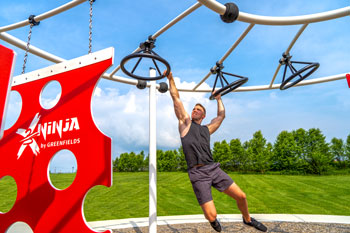
As one Fairfield, N.J.-based fitness equipment manufacturer explained in a press release about ACSM’s trends, the survey is “a crucial tool” that “… goes beyond highlighting passing fads, instead providing data-driven insights to guide investments and keep professionals on the leading edge of the market.” With its emphasis on lasting trends over fads, the survey “… plays a strategic role in helping industry stakeholders make informed decisions for long-term success.”
The top three trends for 2024 named by ACSM reveal a fitness landscape wherein exercisers are still focused on wearable technology, employers are looking for ways to facilitate healthy behaviors in their workforce, and older adults make up a growing segment of the population needing to get active.
Outdoor Fitness
While outdoor fitness activities fall just beyond ACSM’s Top 10 list, in position No. 12, the myriad setups and ways of providing outdoor fitness offerings take many of the top 10 into account—including reaching older adults, incorporating technology through apps and scannable QR codes, and allowing exercisers to focus on their physical and mental health. But most importantly, outdoor fitness can be found filling a needful niche that the health club market simply cannot reach, filling a “crucial gap in the wellness market,” according to Allison Abel, director of marketing for an outdoor fitness equipment manufacturer based in Anaheim, Calif. “The overall fitness industry has almost limitless options for those who have the resources to take advantage of them. But there are millions of people in the U.S. who will not have these opportunities available to them due to various barriers—one of the biggest being economic.
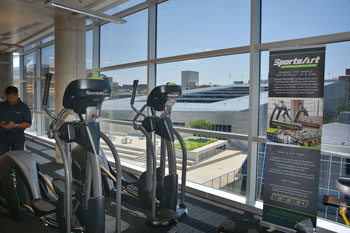
“Outdoor fitness equipment fills a key need on several levels: First, it is a great equalizer; it provides the same opportunities to everyone at no cost. Second, it’s open to the public 24/7 and often located in local parks, making fitness more accessible than ever before. … Third, many types of outdoor fitness equipment feature a highly intuitive design, so that even those with no background in fitness can easily understand how to exercise and start working out right away. For equipment that is not as intuitive, there are usually video demos available by scanning a QR code on equipment signage, or tutorials available in companion apps. … All these aspects of outdoor fitness combine to truly make it an indispensable amenity for any community.”
To ensure an outdoor fitness area is successful, it’s important to incorporate the needs of the surrounding community when making decisions about equipment. “Well-designed fitness areas, created with the surrounding communities in mind, will feature equipment that will be used by a huge proportion of those in the neighborhood—instead of only those who are already fit,” she added. “Ideally, there will be a good mix of equipment to accommodate those of varying ability levels—older adults, athletes, those with disabilities, teens, parents, and the list goes on.”
Tech Talk
The addition of QR codes and companion apps to outdoor fitness equipment dovetails with some of the top trends cited by ACSM—wearable technology and mobile exercise apps. The No. 1 trend for 2024? Wearable technology, such as fitness trackers, smart watches, heartrate monitors and GPS tracking. Exercisers are still highly engaged with technology that helps them keep track of (and therefore adjust to) key data, such as heart rate, calories burned, sitting time, sleep quality and more. Combine this with the No. 7 trend, mobile exercise apps that can aid in exercise performance or programming, and you see a picture of increasingly connected fitness. Trends No. 18 (Data-Driven Training Technology) and 19 (Online Personal Training) provide even more emphasis on tech. 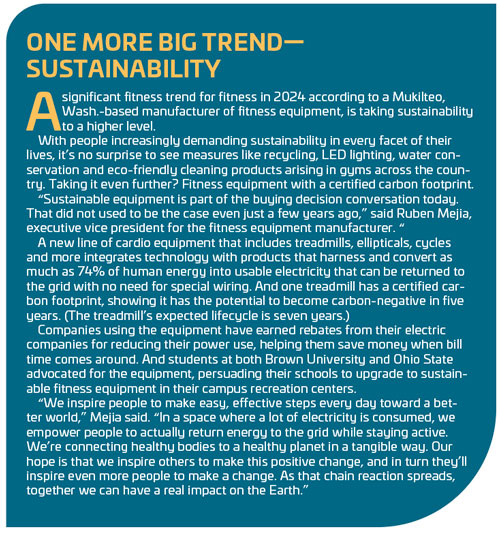
ACSM says it’s no surprise that wearable technology has been among the top three trends since 2016, considering technology’s huge impact on the world. Devices that provide real-time information about pulse, step counts and more can help exercise professionals tailor programs to meet their clients’ needs, ACSM says, adding that the persistence of wearables in the trends list might also be related to a growing interest in using these tools to connect with others.
“We know that social support is one of the strongest predictors of exercise self-efficacy,” Newsome said. “It is important for exercise professionals to leverage the capabilities of wearable technology to improve adherence and autonomy for clients.”
In addition to providing equipment that can synchronize with Apple Watch (or a proprietary platform for those using Fitbit, Garmin or Polar trackers), one Fairfield, N.J.-based fitness equipment manufacturer offers a specialized app, which provides personalized workouts and on-demand videos, helping exercisers personalize their workout in the gym while using the equipment, as well as at home or outside. The app combines scientific research with AI to create tailored programs that cater to a variety of specific fitness goals.
Young & Old
The No. 3 and No. 9 trends on ACSM’s list both involve fitness programs focused on specific populations. The No. 3 trend, Fitness Programs for Older Adults, involves “interventions focused on the unique needs of the aging population,” while No. 9, Youth Athletic Development, involves “engaging young people in sports and related activities.”
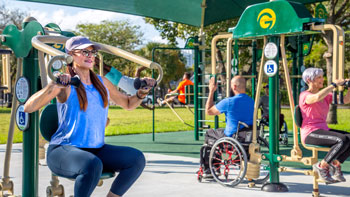
It’s no surprise that fitness programs aimed specifically at older adults continue to hold a top spot in the trends list. With a tremendous number of baby boomers entering retirement and focused on maintaining an active lifestyle, this trend was in the No. 9 position in 2021, No. 11 in 2022 then No. 4 in 2023. The 2021 Profile of Older Americans revealed that the number of Americans 65 and older increased 38% between 2010 and 2021, an increase that will likely continue through 2040. More than a quarter (27%) of this population lives independently and sees regular physical activity as an essential tool in helping them stay independent and healthy.
This has led to a growing demand for fitness equipment and programming designed to meet the needs of active agers, and the industry has responded. One manufacturer’s circuit training solution, for example, offers a guided program that requires no adjustments and no wait time, with exercises, workload, work/rest ratios and pace defined and integrated into personalized programs. Functional equipment, indoor walking tracks, and even the basics, like treadmills and ellipticals, also meet the needs of this growing population of active older adults.
On the other end of the age spectrum, and making its first appearance in the top 10 trends list, youth athletic development also calls for a unique approach, from programs that can be incorporated into physical education classes to an increase in competitive obstacle courses and ninja-related equipment in parks.
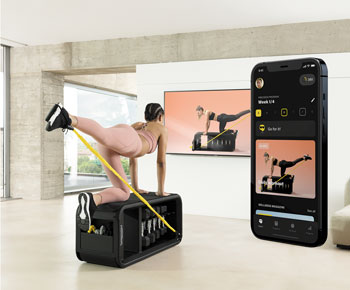
“A big trend we’ve seen lately is a heightened demand for Ninja and obstacle courses,” Abel said. “Parks generally do a great job of providing opportunities for kids and athletes to be active. There aren’t always the same amount of opportunities for other parts of the population, however, and teenagers are one of the key demographics that don’t always have things geared toward them.
“Ninja and obstacle courses are fantastic ways to engage this age group for several reasons: The courses are highly social and encourage competition; the obstacles can be navigated any number of different ways, allowing teens to be creative as they expend energy; and generally all courses, even the most difficult, have features that even beginners can successfully complete. What’s more, kids are more motivated to engage in an amenity that’s enjoying a high degree of popularity right now, thanks to the American Ninja Warrior TV show.”
A Focus on Health & Wellness
Other trends in the top 20 focus on exercise for health (No. 2, Worksite Health Promotion, No. 4, Exercise for Weight Loss, No. 8, Exercise for Mental Health and No. 13, Health and Wellness Coaching), and even exercise as medicine (No. 11, Lifestyle Medicine and No. 16, Exercise Is Medicine, a global health initiative managed by the ACSM that aims to make physical activity assessment and promotion a standard in clinical care).
“We are noticing that exercise professionals prioritize health-related outcomes of fitness programs,” Newsome said. “Due to the COVID-19 pandemic, we are starting to see fitness being used to reduce symptoms of mental illness and to increase health-related quality of life.” RM



